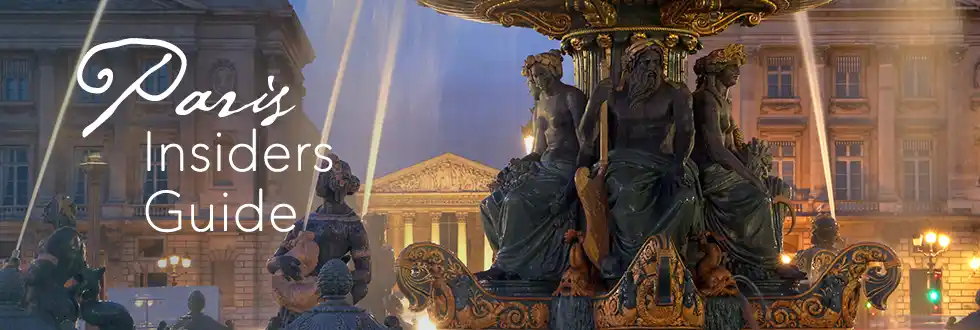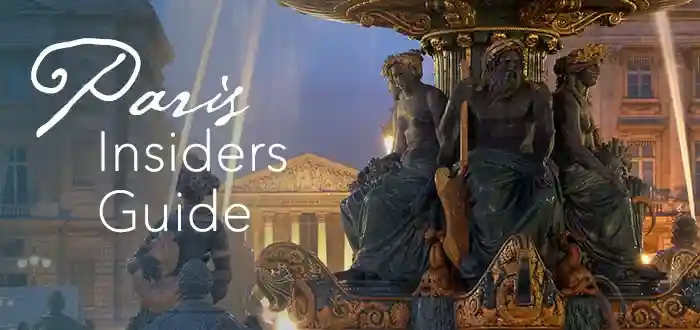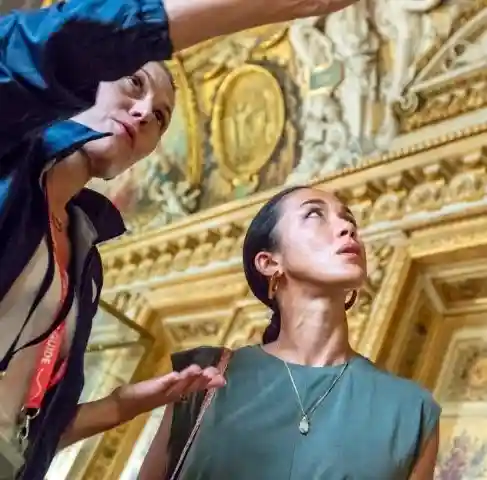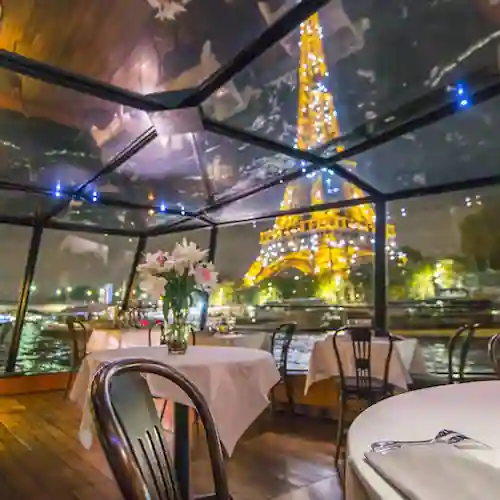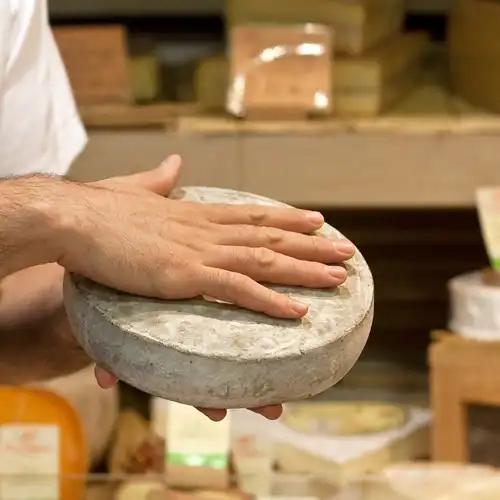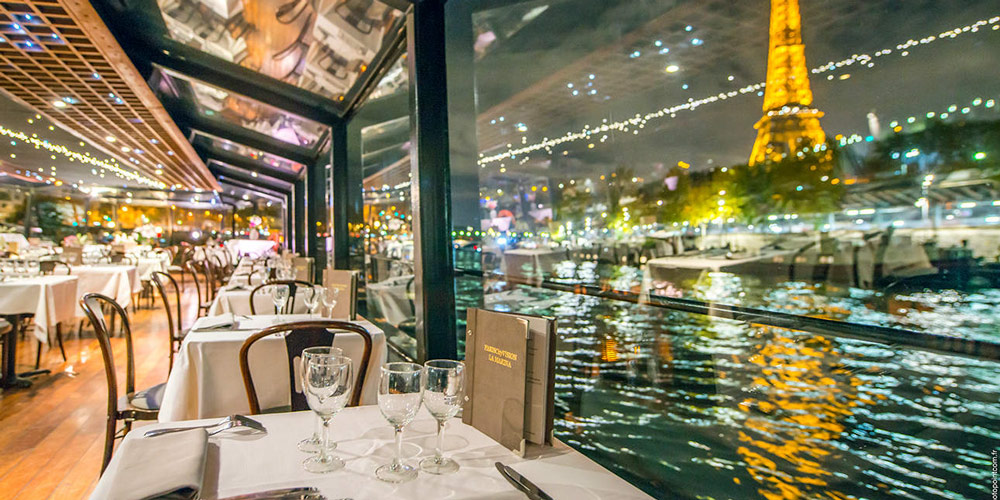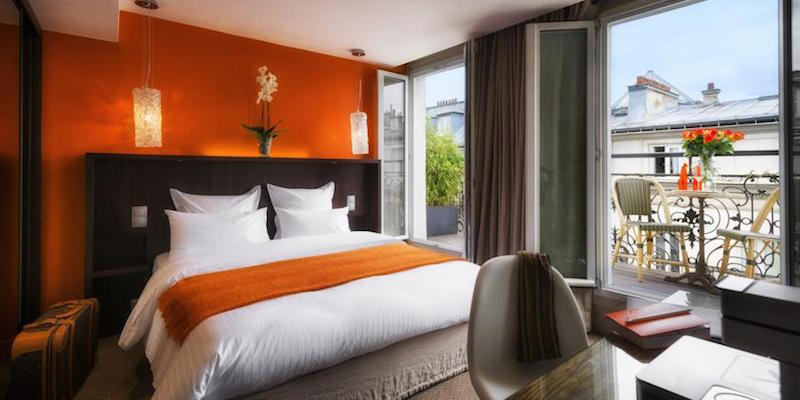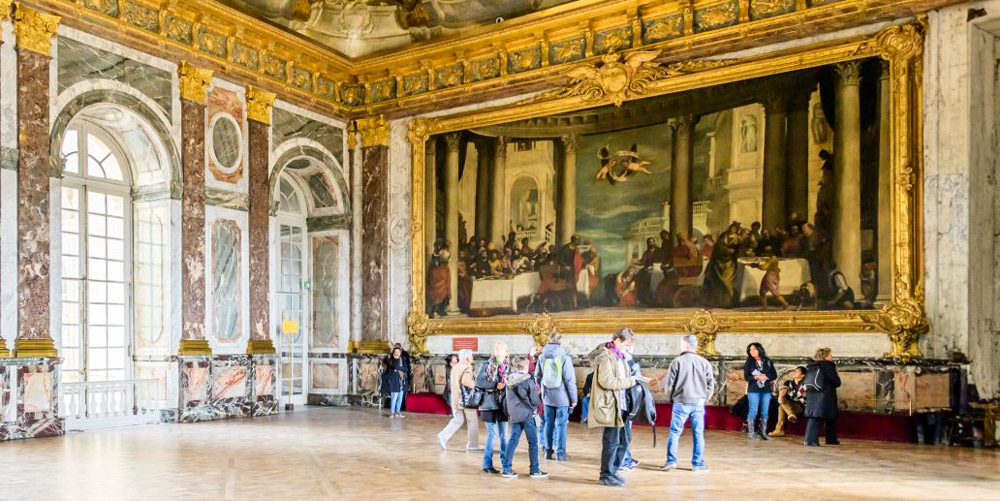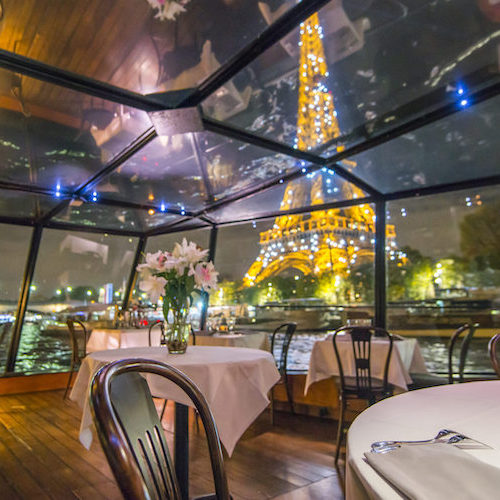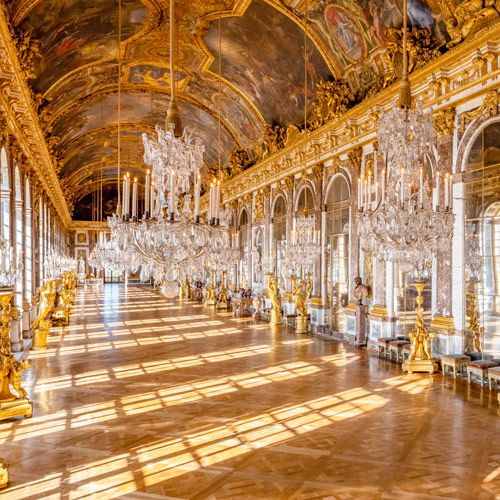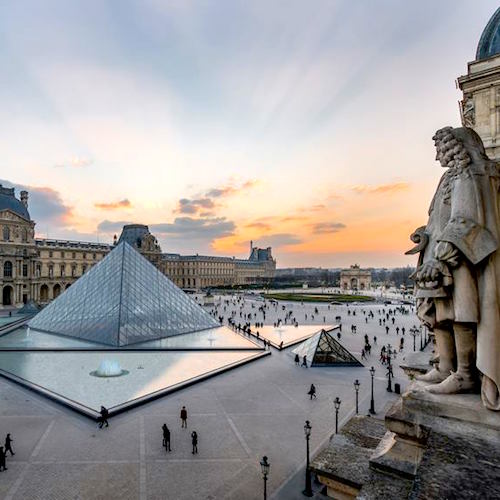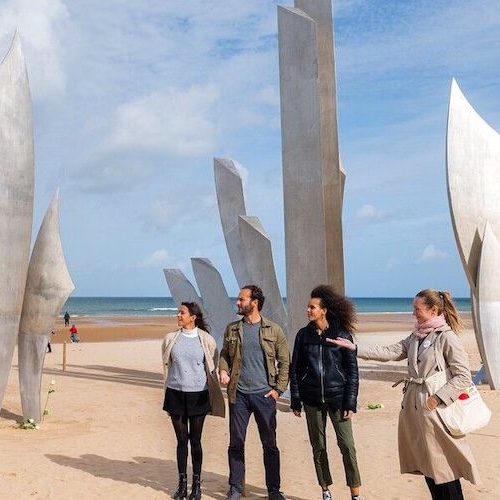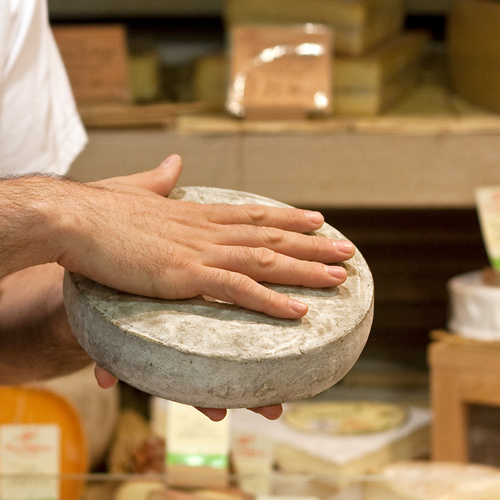Pont des Arts Paris – A River Crossing With Style Since 1804
Pont des Arts Paris has long punched above its weight. A thin ribbon of iron stretched across the Seine, it isn't the biggest or flashiest of the Paris bridges. But what it lacks in size, it makes up for with history, charm, and a surprising number of wine-fueled picnics.
From student gatherings to sketchbook-toting artists, this bridge has seen it all. It was the first metal bridge in Paris, and for a while, the most precarious. These days, it's more about ambling than engineering, but it remains one of the most beautiful bridges in Paris and a favorite with visitors who like their scenery with a side of Parisian flair.
![]()
Discover What's On When You're Here...
• January... |
• February... |
• March... |
• April... |
• May... |
• June... |
• July... |
• August... |
• September... |
• October... |
• November... |
• December... |
Discover What's On When You're Here
• January...
|
• February... |
• March... |
|---|---|---|
• April... |
• May... |
• June... |
• July... |
• August... |
• September... |
• October... |
• November... |
• December... |
A Paris Bridge That Changed the Game
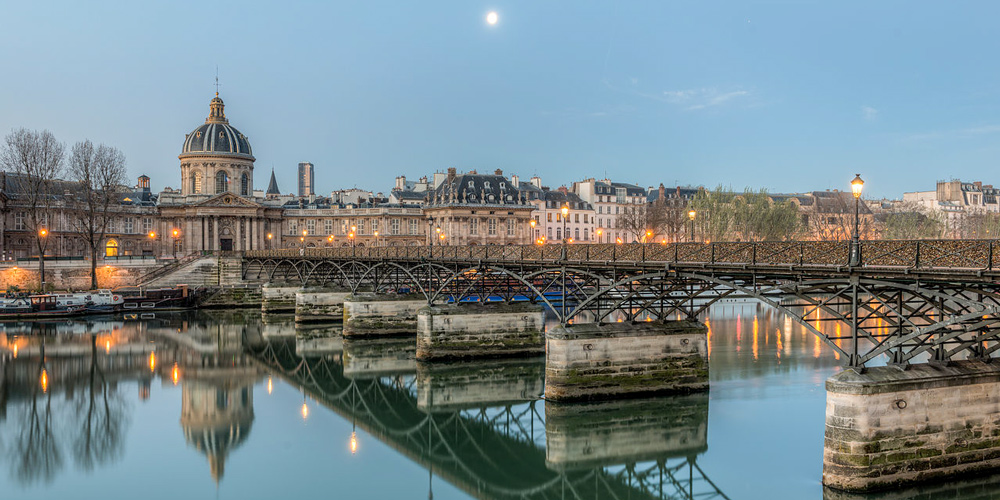 Pont des Arts and the Institut de France, photo Wikimedia by Daniel Vorndran
Pont des Arts and the Institut de France, photo Wikimedia by Daniel Vorndran
When Napoleon called for a new bridge at the start of the 19th century, he didn't opt for stone. Instead, he went full-on modern with an iron structure — the very first in Paris. This was 1804, and the new material felt downright futuristic. The bridge connected two major institutions: the Louvre and the Institut de France, two bastions of knowledge and power now connected by a footpath over the Seine.
The original bridge had nine arches and looked a bit like a metallic centipede stretching across the river. It was meant for pedestrians from the start, a rare thing in a city where carriages once ruled. And it was a hit. Parisians strolled across, merchants set up stands, and artists set up easels. The Pont des Arts had made itself useful and charming in one go.
The Best Paris Activities
The Top Paris Activity
Bombings, Barges & A Bridge That Wouldn't Quit
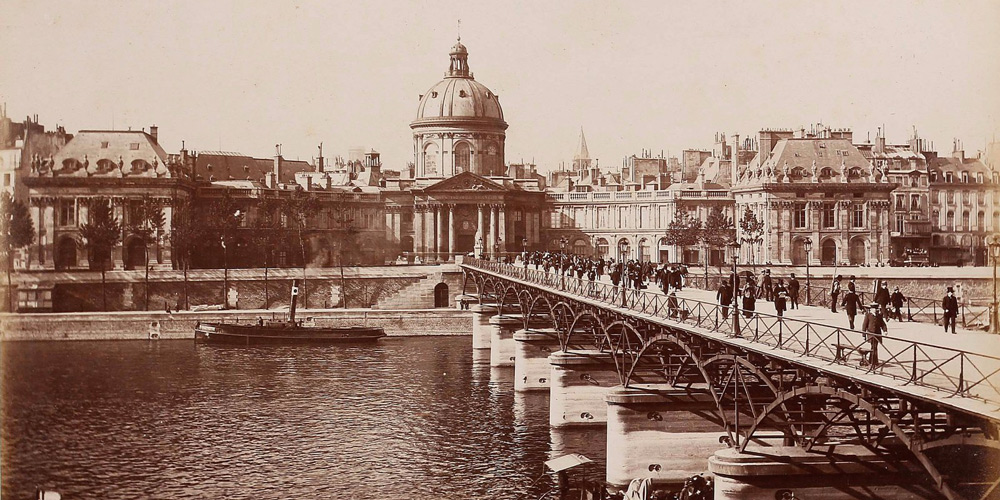 The bridge that Napoleon built, photographed in 1887
The bridge that Napoleon built, photographed in 1887
Of course, Paris has a habit of building things to last until something dramatic comes along. In the 20th century, Pont des Arts took several hits. It sustained bomb damage during the World Wars and was repeatedly clipped by passing boats. A structural study in 1976 revealed the bridge was no longer safe. Parisians, understandably fond of their elegant overpass, were not pleased.
After some debate, the decision was made to rebuild. The current version, finished in 1984, was designed to look like the original — but with more modern reinforcement and fewer opportunities for barges to sideswipe it. Today, the structure has seven arches instead of nine and uses lighter steel, which makes it feel both timeless and (finally) secure.
Pont des Arts Near the Louvre
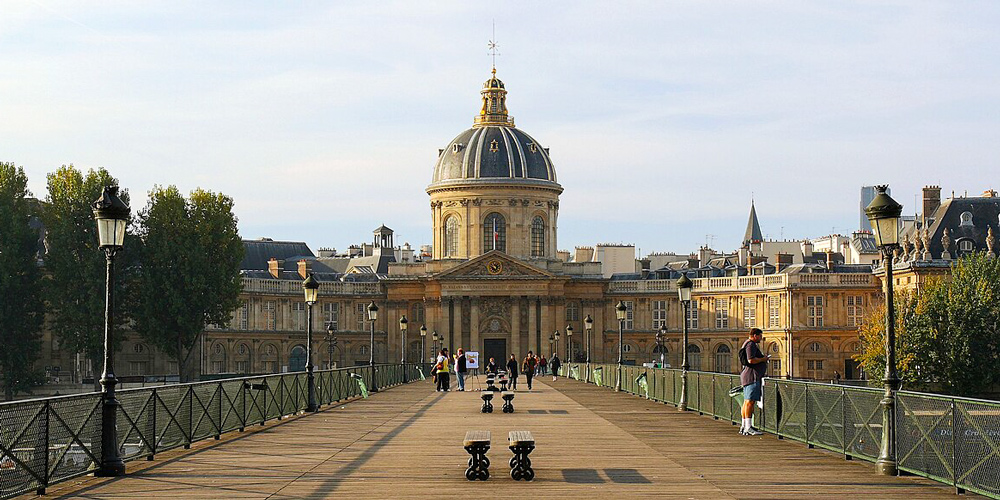 Pont des Arts and the Institut de France in 2007, photo Wikimedia by Benh Lieu Song
Pont des Arts and the Institut de France in 2007, photo Wikimedia by Benh Lieu Song
A Bridge Between Two Heavyweights
There's something satisfying about crossing the river from the Louvre to the Institut de France. On one end: the world's most famous museum and a former royal palace. On the other: the baroque dome of the Institut de France that houses the elite Académie Française. Standing in the middle of the bridge, you have one of the best panoramic views in Paris: westward to the Eiffel Tower, eastward to Île de la Cité, Pont Neuf, and Notre-Dame Cathedral.
And the best part? This view is uninterrupted by traffic. As a pedestrian-only bridge, the Pont des Arts offers something many of the other famous bridges in Paris cannot: peace. It's a bridge for flâneurs, for lingering, and for pretending the river belongs to you. Which, for a few minutes, it sort of does.
![]()
|
Paris Dinner Cruises on the Seine Dine in style as you glide past the Eiffel Tower, Notre-Dame, and the Louvre on a magical Seine River cruise. Gourmet food, champagne, and Paris lit up at night – it’s unforgettable. |
|
Paris Dinner Cruises on the Seine Dine in style as you glide past the Eiffel Tower, Notre-Dame, and the Louvre on a magical Seine River cruise. Gourmet food, champagne, and Paris lit up at night – it’s unforgettable. |
The Pont des Arts Pedestrian Bridge
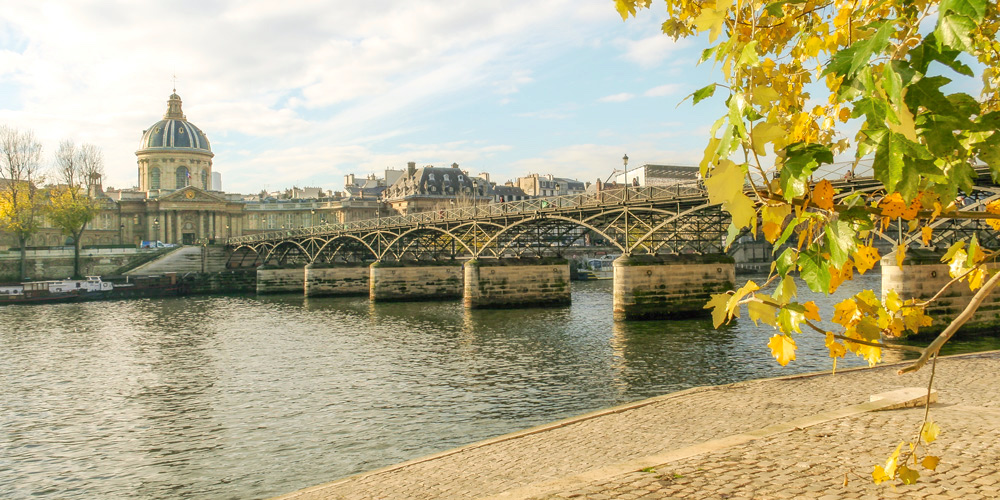 Pont des Arts from the banks of the Seine in 2007, photo by Mark Craft
Pont des Arts from the banks of the Seine in 2007, photo by Mark Craft
Where Parisians Come to Roam
This may be a small detail, but it matters: Pont des Arts was designed as a pedestrian bridge from the start. This wasn't an adaptation or a clever rebrand. Napoleon wanted a footbridge, and that's what he got. The original version even had benches and flower boxes, making it more of a promenade than a thoroughfare.
To this day, the Pont des Arts remains one of the few Seine River bridges that truly puts pedestrians first. No bikes zipping past, no honking, no exhaust. Just you, the river, the view, and perhaps a cellist tuning up nearby. It's why this spot is still one of the most beloved picnic grounds in the city. And one of the most photographed.
![]()
|
Browse our hand-picked Paris hotel deals with real-time discounts of up to 20%. Stay in the Marais, Saint Germain, the Latin Quarter, the Left Bank near the Eiffel Tower… every arrondissement is on the list. |
|
Browse our hand-picked Paris hotel deals with real-time discounts of up to 20%. Stay in the Marais, Saint Germain, the Latin Quarter, the Left Bank near the Eiffel Tower… every arrondissement is on the list. |
The Weight of Bad Ideas
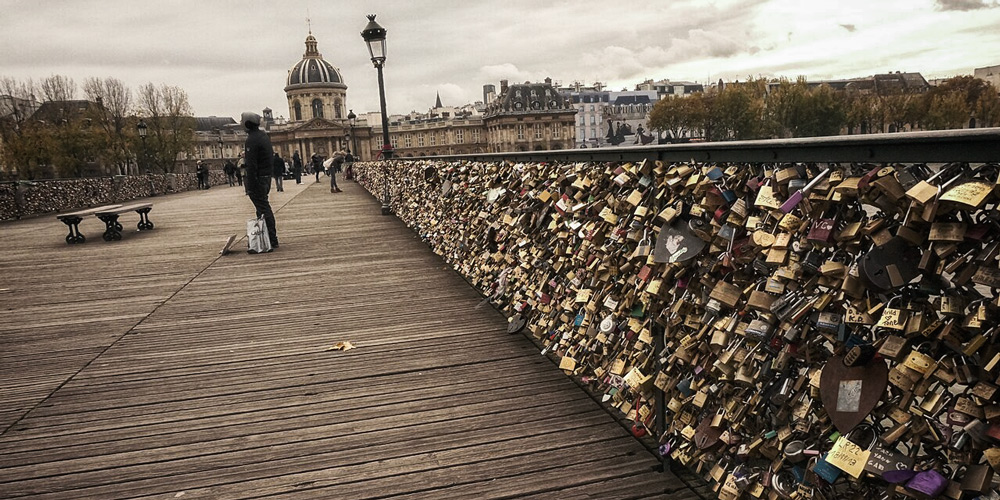 The vandalism that was the "love locks" in 2013, photo Wikimedia by
The vandalism that was the "love locks" in 2013, photo Wikimedia by
A Lock on the Wrong Kind of Legacy
For a while, the Pont des Arts Paris was overwhelmed by a wave of well-intentioned vandalism: the infamous "love locks". Tourists began clipping padlocks to the bridge's metal panels, often inscribed with initials and hearts. Cute in theory, but not in physics. The weight added up — quite literally tons of metal — putting strain on the structure and damaging the panels. (You can also see the lovelocks in the photo from 2014 at the tops of this article.)
In 2015, the City of Paris finally stepped in. The panels were removed, the locks discarded, and replacements installed. The message was clear: love is great, but not at the expense of heritage. These days, you're better off snapping a photo and sending it with a heart emoji. Or maybe just enjoying the view and resisting the urge to bring a hardware store along.
A Setting for Art and Artists
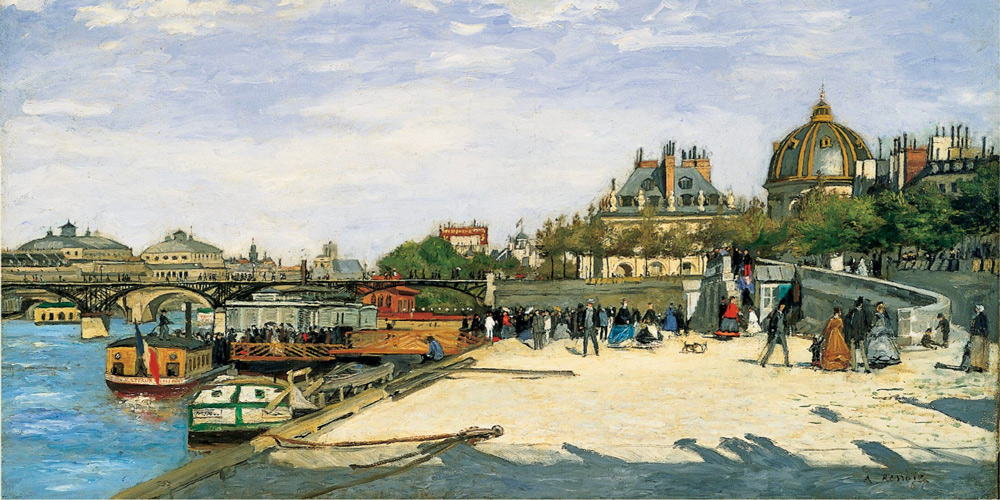 Renoir painting from 1867 featuring Pont des Arts. photo Wikimedia
Renoir painting from 1867 featuring Pont des Arts. photo Wikimedia
Not Just Another Pretty Bridge
Pont des Arts isn't just a name-drop on the list of historic bridges of Paris. It's a working part of the city's creative culture. Over the years it has appeared in films, paintings, and more than a few graduation photos. Artists still show up with sketchpads. Musicians turn the span into a stage. Photographers love the light — golden hour on the bridge is particularly fine.
You're also likely to find students from the nearby École des Beaux-Arts lounging here, often talking about art movements you forgot existed. It's part of the rhythm of the bridge: visitors, locals, art kids, and occasional philosophers drifting through a space where Paris seems to pause. It's less about crossing and more about hanging out halfway across.
![]()
|
Trade Paris bustle for royal grandeur on a guided Versailles tour. Skip the lines, wander the gardens, and peek inside Marie Antoinette’s private estate. History never looked this good. |
|
Trade Paris bustle for royal grandeur on a guided Versailles tour. Skip the lines, wander the gardens, and peek inside Marie Antoinette’s private estate. History never looked this good. |
Why Pont des Arts Paris Still Matters
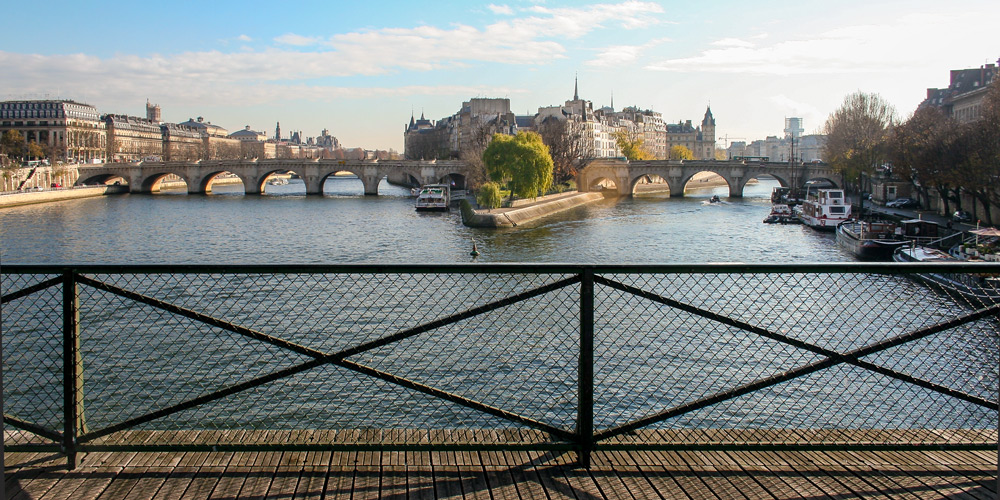 Ile de la Cité as seen from the Pont des Arts in 2007, pre-love-locks, photo by Mark Craft
Ile de la Cité as seen from the Pont des Arts in 2007, pre-love-locks, photo by Mark Craft
A Favorite Among the Famous Bridges in Paris
Pont des Arts may not have the gilded glamour of Pont Alexandre III or the age of Pont Neuf, but it's the Paris bridge people remember. That counts for something. Its location, its use, its very walkability make it a favorite among those looking for the most beautiful bridges in Paris.
It still connects major institutions. It still gives you a straight shot across the river without stress. It still fills up with people watching the sunset. For a structure that's been knocked down and rebuilt, it holds onto its identity remarkably well. Pont des Arts Paris is less about transportation and more about appreciation — of the city, the river, and a moment spent in the middle of it all.
![]()
|
Browse our hand-picked Paris hotel deals with real-time discounts of up to 20%. Stay in the Marais, Saint Germain, the Latin Quarter, the Left Bank near the Eiffel Tower… every arrondissement is on the list. |
|
Browse our hand-picked Paris hotel deals with real-time discounts of up to 20%. Stay in the Marais, Saint Germain, the Latin Quarter, the Left Bank near the Eiffel Tower… every arrondissement is on the list. |
